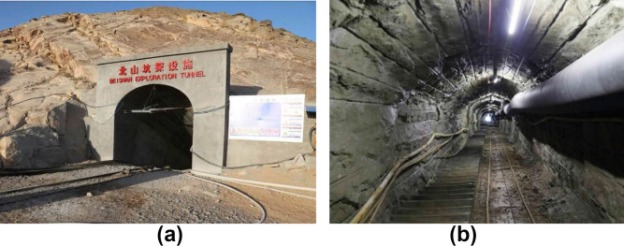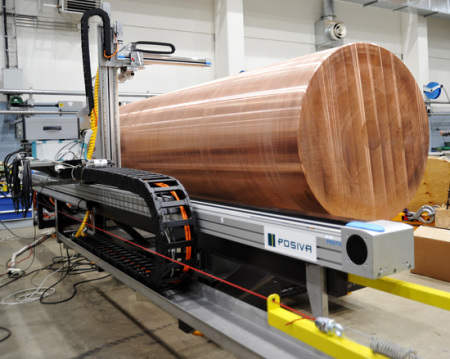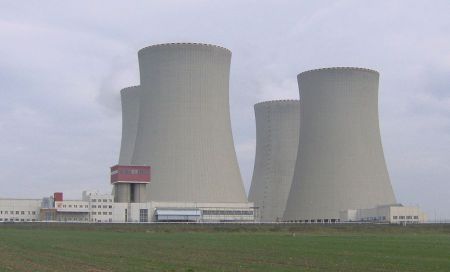The Onkalo Nuclear Repository, Finland: Buried in holes in the floor will be copper canisters, 5.2 metres long, containing the remains of some of the world’s most radioactive nuclear waste. When the drilling is finished, in a century or so, 3,250 canisters each containing half a tonne of spent fuel will be buried in up to 70km of tunnels. Then the entire area will be sealed to make it safe for posterity.
The hundred-year timescale already means this is a megaproject. But that is just the beginning. The radioactive isotopes of plutonium used in nuclear-power plants must be stored for tens of thousands of years before they are safe. Finland aims to isolate its stockpile in the Onkalo repository, a burial chamber beneath the small forested island of Olkiluoto, home to one of its two nuclear-power plants, for at least 100,000 years.
In geological terms, that is a heartbeat; Finland’s bedrock is 1.9bn years old. But in human terms, 4,000 generations are almost inconceivable. As Mika Pohjonen, the managing director of Posiva, the utility-owned Finnish company overseeing the project, says, no one knows whether humans, creatures (or machines) will rule the Earth above by then—let alone whether they will be able to read today’s safety manuals. A hundred thousand years ago, Finland was under an ice sheet and Homo sapiens had not yet reached Europe….
But Posiva’s immediate priority is to create disposal caverns far enough from rock fissures and groundwater that Finland’s nuclear authorities allow it to start moving the canisters to their tomb in the early 2020s. “This is drilling with silk gloves on,” Mr Pohjonen says, as the machine pounds the rock with a deafening roar. “It has to be done gently.”
The disposal of nuclear fuel is among the most intractable of infrastructure projects. And there are already 266,000 tonnes of it in storage around the world, about 70,000 tonnes more than there were a decade ago. As Markku Lehtonen, a Finnish academic at the University of Sussex, puts it, the costs are high; the benefits are about avoiding harm rather than adding value; and evaluation is not about assessing risk, but about dealing with “uncertainty, ambiguity and ignorance” over a protracted timescale….
Finland began the search for a site in 1983, shortly after it began generating nuclear power, and chose Olkiluoto after reviewing 100 areas. It has mapped faults and fissures in the bedrock, and sited the repository in a seismic “quiet zone”. It says it will avoid burying canisters close to potential pressure points, to minimise the danger that rock movements would crush or tear the canisters and cause radioactive leakage. Finland’s Radiation and Nuclear Safety Authority (STUK) called Posiva’s analysis of the bedrock and groundwater “state of the art”…
But whether in crystalline granite, as in Finland and Sweden, or clay, as in France, or volcanic rock, as in Yucca Mountain, nuclear experts are confident that deep geological disposal can be safe. “There is a great deal of evidence that we can find many sites in the world with adequate geological properties for the required safety,” says Stefan Mayer, a waste-disposal expert at the IAEA.
Technology is the next hurdle. As well as 400-500 metres of bedrock between the canisters and the surface, there will be several man-made layers: steel, copper, water-absorbent bentonite clay around the canisters, and bentonite plugs sealing the caverns and, eventually, the access tunnel…. Some academics…are worried that the Finnish media have underplayed concerns about copper corrosion, compared with other countries with similar “multi-barrier” protection systems.
The trickiest challenge, though, is to build broader societal consent. Finland appears to have succeeded by starting early and sticking to its timetable. The decision to find a site and start disposing of nuclear waste in the 2020s was taken 40 years ago. In 1994 its parliament banned the import and export of spent nuclear fuel, which increased the pressure to find a home-grown solution. Few other countries have demonstrated the same determination. The good news is that, because waste needs to be cooled in tanks for 30-50 years before being disposed of, emerging nuclear powerhouses such as China have time to prepare.
Finns’ trust in their nuclear industry has remained high, despite accidents elsewhere, such as those at Chernobyl in 1986 and Fukushima in 2011. Finland’s four nuclear reactors operate at among the world’s highest utilisation rates, and supply 26% of its electricity. Its two nuclear utilities, TVO and Fortum, which co-own Posiva, are themselves part of an electricity system in which Finnish industries and many municipalities have a stake, bolstering public support. The Onkalo repository is situated next door to TVO’s two working Olkiluoto reactors, which means people nearby are—in the phrase of academics—“nuclearised”, that is, convinced of the benefits of nuclear power. Surveys suggest positive attitudes to nuclear power nationally exceed negative ones.
Some academics worry that Finland is taking waste disposal too much on faith. Any mishap could erode trust in an instant, as happened in Japan, another “high-trust” society, after the Fukushima disaster.,,
Other countries, including America and France, follow principles of reversibility or retrievability, meaning they can reverse the disposal process while it is under way or retrieve waste after burial, if technologies and social attitudes change. Finland’s model is more closed; it would take a huge amount of digging to recover the waste once it has been sealed. But analysts say there is no single correct approach. Britain, for instance, has done things by the book but still failed to find a place for a repository.
Finally, there is the matter of cost. Finland’s nuclear-waste kitty, collected from the utilities, currently stands at €2.5bn ($2.7bn). By the time it is closed, the price is expected to be €3.5bn. That is reassuringly modest for a 100-year project, partly reflecting the fact that Finland’s nuclear industry, even when the planned total of five reactors are up and running, is relatively small. Other countries have higher costs, and less discipline. Yucca Mountain, for instance, was once estimated to cost $96bn to complete. In 2012 America had $27bn in its disposal fund, collected from ratepayers, none of which has gone towards nuclear-waste management.
Excerpts Disposing Nuclear Waste: To the Next Ice Age and Beyond, Economist, Apr. 15, 2017






